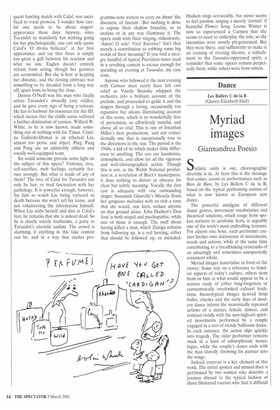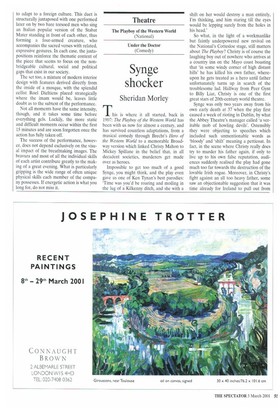Dance
Les Ballets C de la B (Queen Elizabeth Hall)
Myriad images
Giannandrea Poesio
Stylistic unity is out, choreographic diversity is in. At least this is the message that comes across in performances such as Rien de Rien, by Les Ballets C de la B, based on the typical performing canons of what is now known as European new dance.
The powerful amalgam of different dance genres, movement vocabularies and theatrical solutions, which range from spoken sections to acrobatic feats, is arguably one of the work's most enthralling features. For almost one hour, each performer creates his/her own microcosm of movements, words and actions, while at the same time contributing to a breathtaking crescendo of an amazingly and sometimes unexpectedly consistent whole.
Myriad images materialise in front of the viewer. Some rely on a reference to familiar aspects of today's culture, others stem from or hint at what would appear to be a serious study of either long-forgotten or eurocentrically overlooked cultural traditions. Stereotypical images derived from ballet, cinema and the early days of modern dance inform the neurotically repeated actions of a mature female dancer, and contrast vividly with the non-high-art spirited movements performed by a couple engaged in a sort of trendy ballroom dance. In each instance, the action slips quickly into tragedy. The older performer remains stuck in a kind of schizophrenic monologue, while the couple's dance ends with the man literally throwing his partner into the wings.
Indeed, contrast is a key element of this work. The initial spoken and mimed duet is performed by two women who describe a journey abroad in the typical fashion of those blinkered tourists who find it difficult to adapt to a foreign culture. This duet is structurally juxtaposed with one performed later on by two bare torsoed men who sing an Italian popular version of the Stabat Mater standing in front of each other, thus forming a four-armed creature, who accompanies the sacred verses with related, expressive gestures. In each case, the juxtapositions reinforce the thematic content of the piece that seems to focus on the nonbridgeable cultural, social and political gaps that exist in our society.
The set too, a mixture of modern interior design with features derived directly from the inside of a mosque, with the splendid cellist Roel Dieltiens placed strategically where the imam would be, leaves little doubt as to the subtext of the performance.
Not all moments have the same intensity, though, and it takes some time before everything gels. Luckily, the more static and difficult moments occur within the first 15 minutes and are soon forgotten once the action has fully taken off.
The success of the performance, however, does not depend exclusively on the visual impact of the breathtaking images. The bravura and most of all the individual skills of each artist contribute greatly to the making of a great evening. What is particularly gripping is the wide range of often unique physical skills each member of the company possesses. If energetic action is what you long for, do not miss it.













































































 Previous page
Previous page